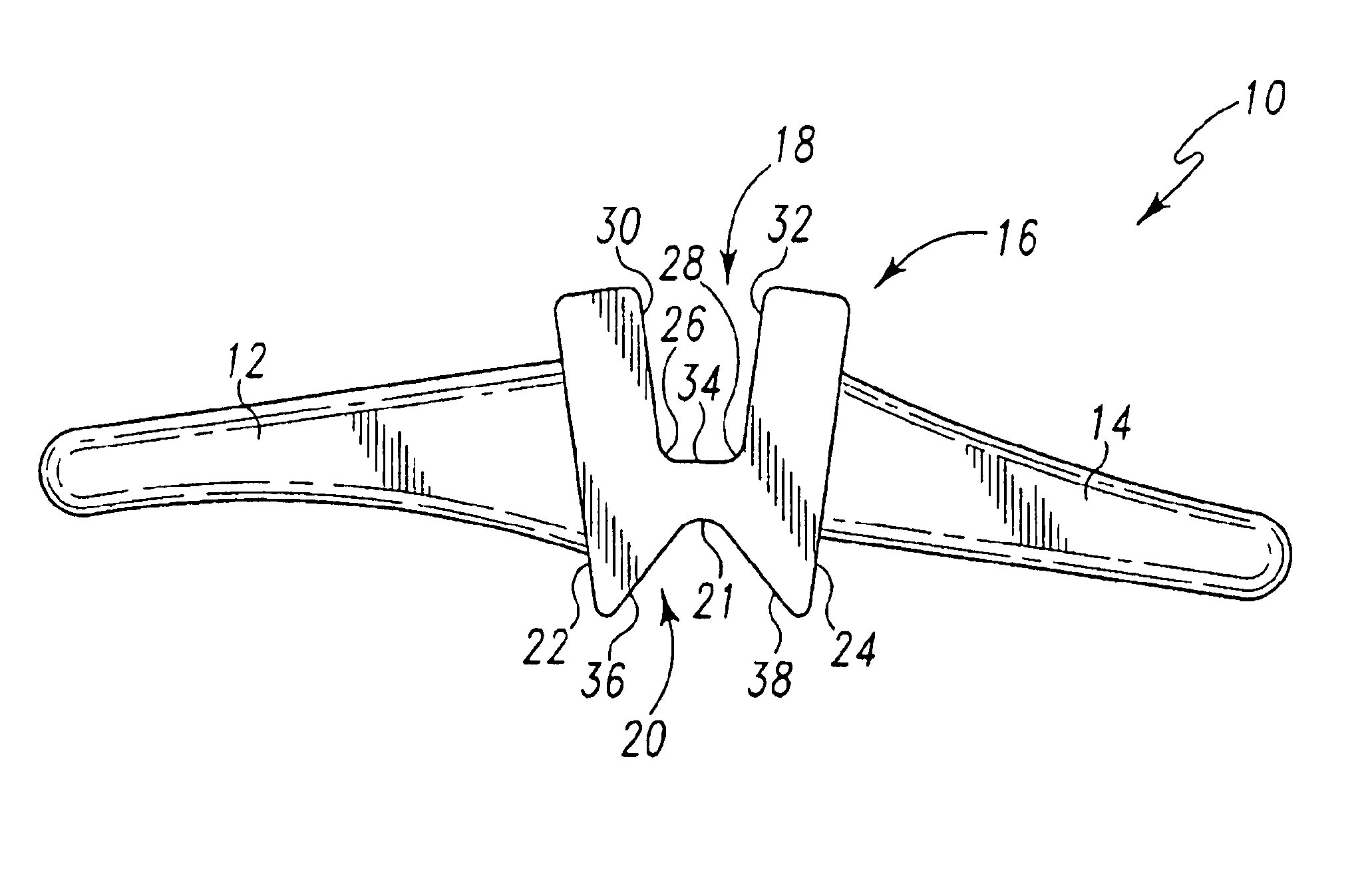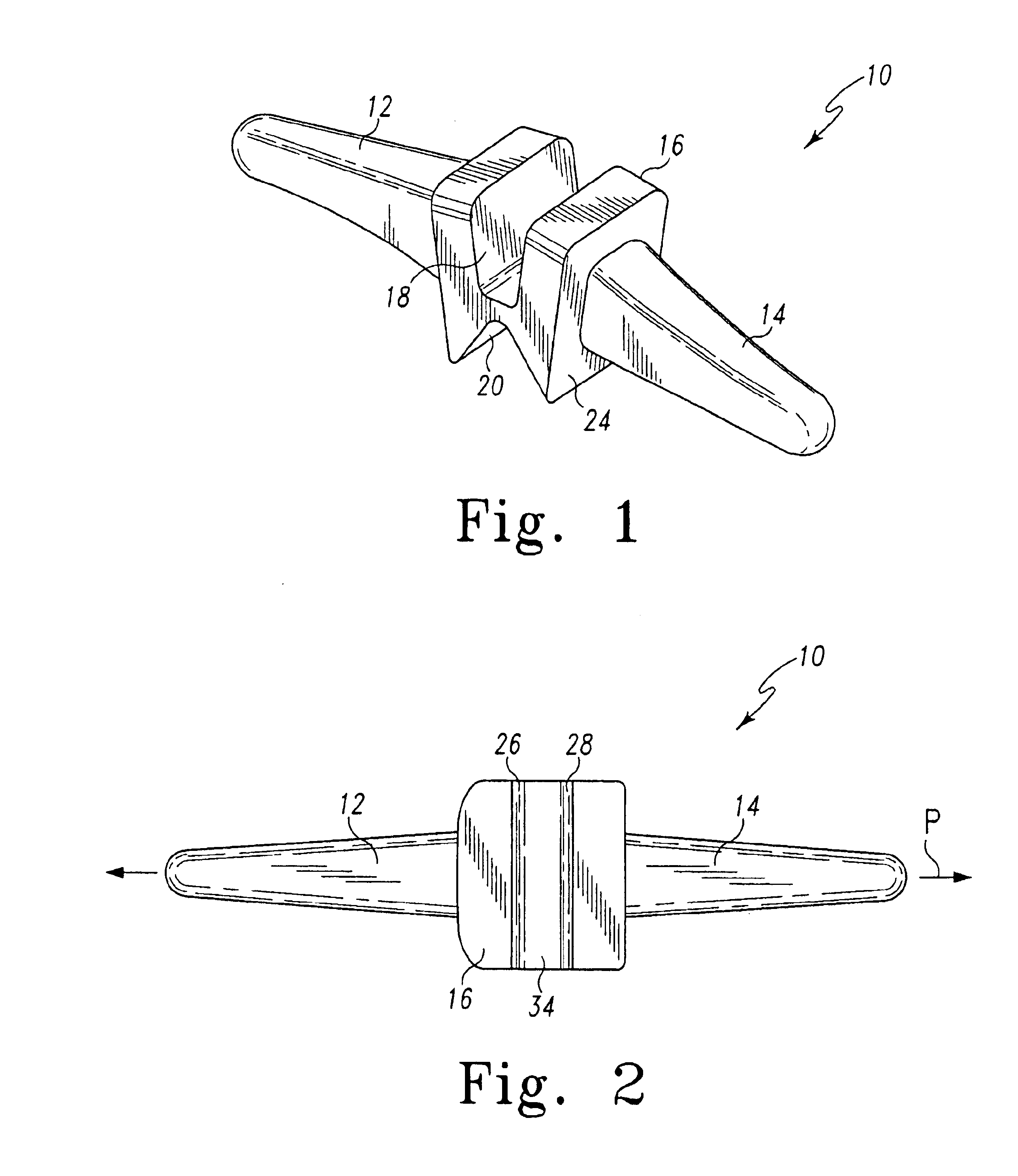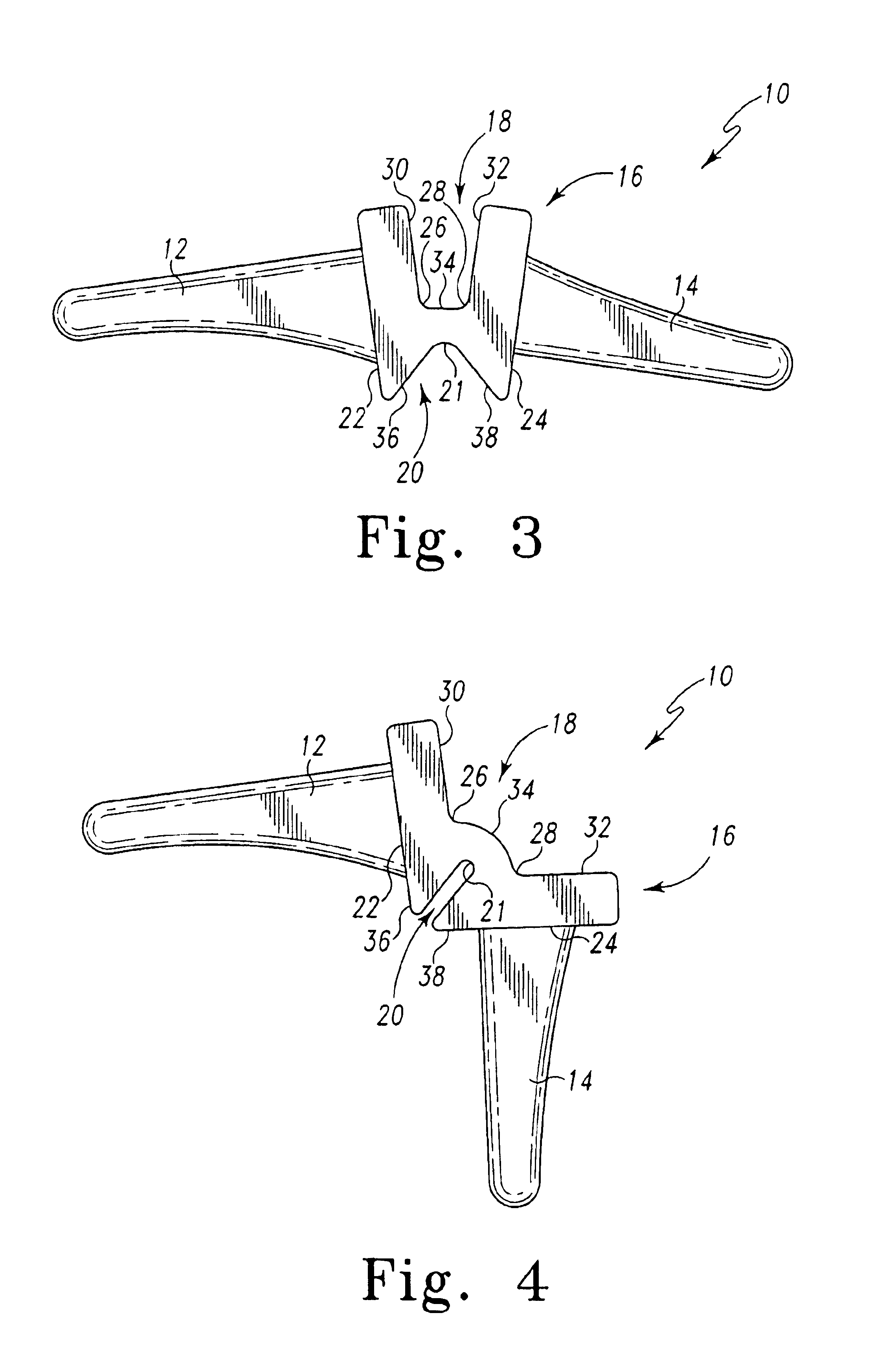Prosthetic joint component having multiple arcuate bending portions
a technology of prosthetic joints and arcuate bending, applied in the field of prosthetic joints, can solve the problems of unnatural position, potential failure of the pivot or hinge portion of the implant, and no angle between the opposing stems in their natural position, and achieve the effect of decreasing the overall stress on the devi
- Summary
- Abstract
- Description
- Claims
- Application Information
AI Technical Summary
Benefits of technology
Problems solved by technology
Method used
Image
Examples
Embodiment Construction
FIGS. 1 through 4 show different views of an exemplary joint prosthetic component 10 according to the present invention. With reference to those FIGS. 1 through 4, the joint prosthetic component comprises a first arm 12, a second arm 14, and a joint member 16. FIG. 7 also shows the joint component 10 implanted into the proximal interphalangeal (PIP) joint of a human finger 48. The joint prosthetic component 10 is preferably formed of a unitary piece of flexible, biocompatible and tear-resistant elastomer. Various types of suitable elastomers are known, and include without limitation silicon rubber, polyurethane rubber, polycarbonate-based polyurethane, and the like. Those of ordinary skill in the art may readily determine the type and hardness of elastomer used.
In general the first arm 12 and the second arm 14 are configured to be received into intramedullary recesses or bores of adjacent bones. For example, in the exemplary implementation of FIG. 7, the first arm 12 is configured t...
PUM
 Login to View More
Login to View More Abstract
Description
Claims
Application Information
 Login to View More
Login to View More - R&D
- Intellectual Property
- Life Sciences
- Materials
- Tech Scout
- Unparalleled Data Quality
- Higher Quality Content
- 60% Fewer Hallucinations
Browse by: Latest US Patents, China's latest patents, Technical Efficacy Thesaurus, Application Domain, Technology Topic, Popular Technical Reports.
© 2025 PatSnap. All rights reserved.Legal|Privacy policy|Modern Slavery Act Transparency Statement|Sitemap|About US| Contact US: help@patsnap.com



